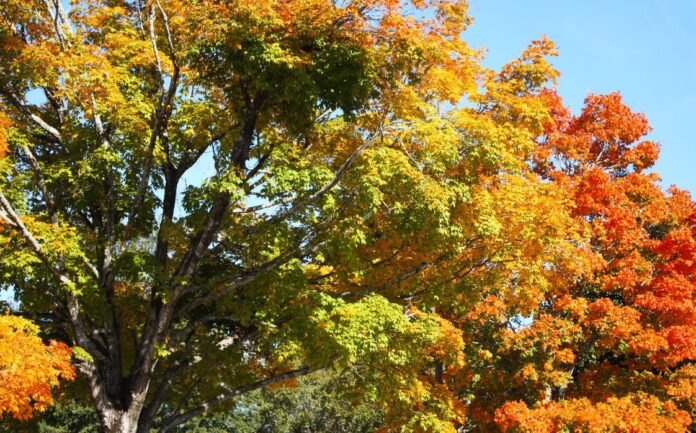AUBURN UNIVERSITY, Ala. — The weather is not the only thing that is changing in Alabama. Along with lower temperatures, fall colors are also making an appearance. The reason for the season is rooted in science and emphasizes the effects that day length and temperature have on trees and leaves.
Mallory Kelley, an Alabama Cooperative Extension System regional agent, said leaf color is driven by a combination of the genetic makeup of the plant and environmental conditions.
“Leaves are made of living plant cells,” Kelley said. “These cells typically appear green because of the pigment chlorophyll.”
The green color in a leaf directly correlates to the amount of sunlight it receives during photosynthesis, the food-making process of plants. As daylight wanes during the fall, so does the amount of sunlight needed to make food for trees. This causes the trees to go dormant. Ultimately, the decrease in sunlight causes chlorophyll in the leaf cells to break down and disappear — allowing other colors to show.
This year, like 2023, has been dry. Trees have struggled to survive because of drought and the hot Alabama summer.
“Recent drought has put added stress on trees,” Kelley said. “Even with added drought stress, there is still time for good fall color in Alabama.”
Loading fall color
Autumn’s color arrives earlier in certain regions of Alabama. The state’s northern area typically receives lower air temperatures first. Onlookers can track the color change as it makes its way down the state. The most prominent colors of fall are yellow, orange, red and purple. Kelley said the hot and cold weather conditions should give Alabamians something to be excited about.
“The warm, sunny days with cool night temperatures are exactly what we need for the bright red and orange color development in our leaves,” she said.
Temperatures trap sugars produced during the warm daylight hours inside the leaves, producing an array of bright fall colors. If closely observed, the brightest colors will most likely be on the southwest side of a tree. This is because the southwest side receives the last bit of sun and heat of the day — increasing the bright color change in those leaves when the cool nighttime temperatures arrive.
One of the first species to signal a change each year is an unpopular selection. The invasive Chinese tallow tree, commonly referred to as the popcorn tree, is a reliable producer of color each year. It serves as the indicator that fall is on its way with its bright colors of all shades.
The color yellow is in every leaf and it reveals itself as chlorophyll fades. Kelley said hickory and ginkgo are two trees commonly seen in the southern landscape that are not genetically capable of making red, orange or purple color — they only produce yellow and brown.
Maples, Bradford pears, Chinese elms and Chinese tallow trees will produce all shades of red, orange and yellow in the right conditions. Kelley said warm, sunny days with cool night temperatures – especially below 45 F – will give leaves extravagant shades.
More information
To learn more about fall leaves, as well as fall and winter plant care, visit the Alabama Extension website at www.aces.edu.




























